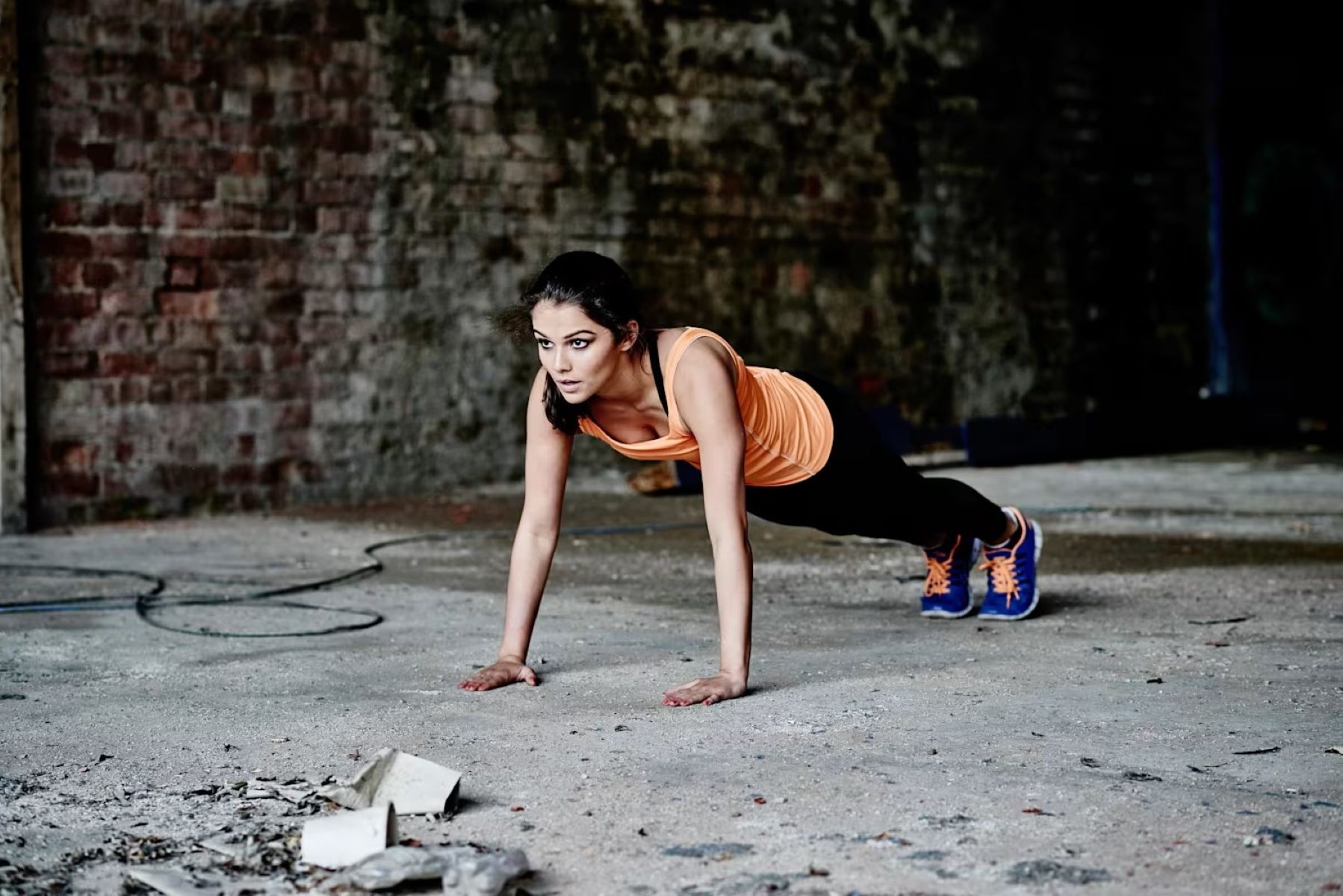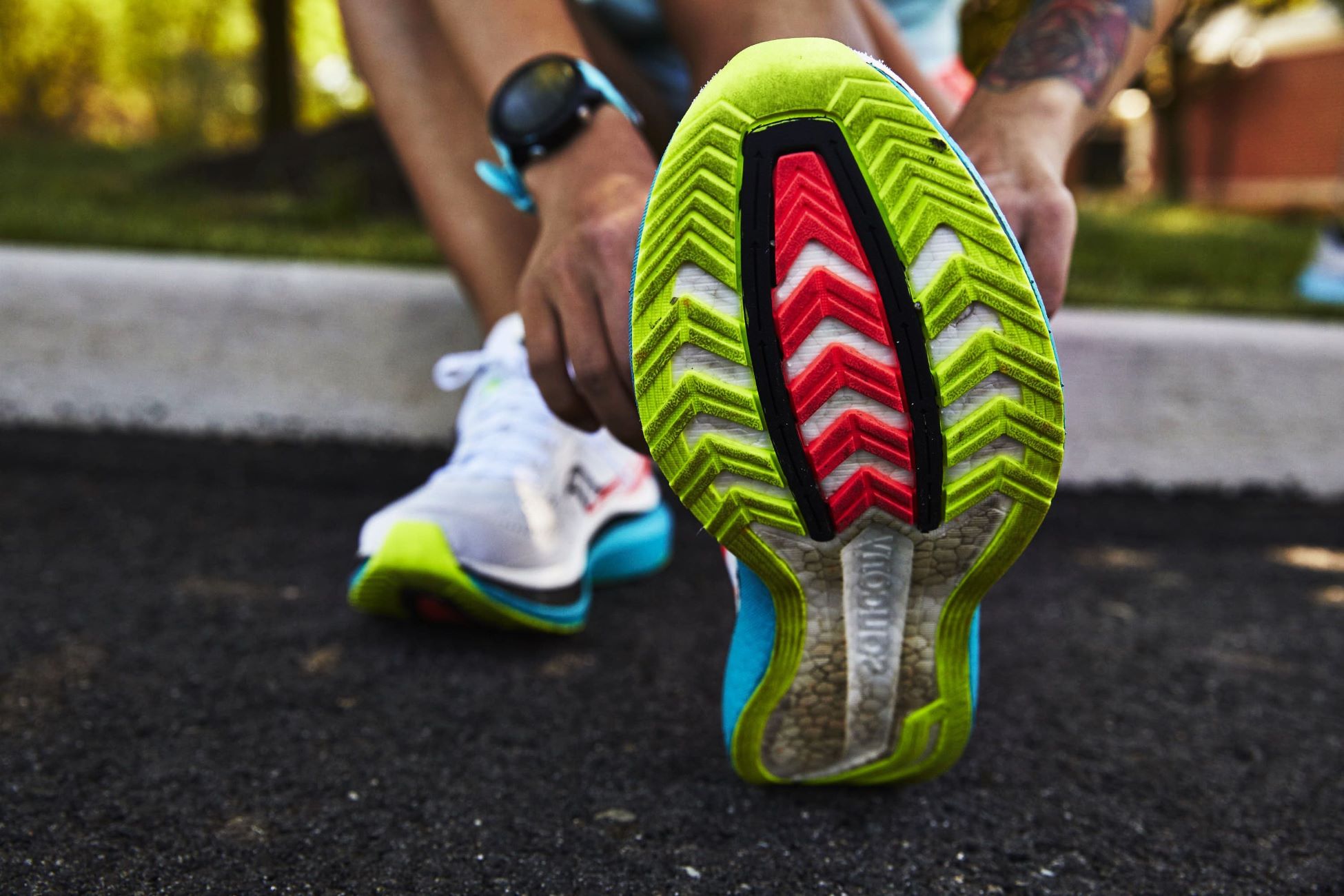Home>Training & Techniques>Mastering The Art Of Running With Perfect Form


Training & Techniques
Mastering The Art Of Running With Perfect Form
Published: March 4, 2024
Learn the best training and techniques for mastering the art of running with perfect form. Enhance your performance and prevent injuries with expert tips. Discover how to improve your running form today!
(Many of the links in this article redirect to a specific reviewed product. Your purchase of these products through affiliate links helps to generate commission for Therunningadvisor.com, at no extra cost. Learn more)
Table of Contents
- The Importance of Proper Running Form
- Understanding the Mechanics of Running
- Tips for Improving Your Running Form
- Common Mistakes to Avoid
- Incorporating Strength Training for Better Form
- The Role of Flexibility and Mobility in Running
- How to Maintain Good Form During Long Runs
- The Mental Aspect of Running with Perfect Form
The Importance of Proper Running Form
Proper running form is the cornerstone of efficient and injury-free running. It encompasses the alignment and movement of the body as you run, and it significantly impacts your performance and overall well-being. Whether you are a seasoned runner or just starting, understanding the importance of maintaining proper running form is crucial for maximizing the benefits of this physical activity.
Enhancing Performance
When you maintain proper running form, your body moves in a way that optimizes energy expenditure and minimizes resistance. This allows you to run more efficiently, covering greater distances with less effort. By aligning your body correctly and engaging the right muscles, you can propel yourself forward with each stride, leading to improved speed and endurance.
Preventing Injuries
One of the most compelling reasons to prioritize proper running form is the significant role it plays in injury prevention. When your body is not aligned correctly or certain muscles are overworked due to poor form, it can lead to a range of issues such as shin splints, knee pain, and muscle strains. By maintaining proper form, you reduce the strain on vulnerable areas of your body, decreasing the likelihood of developing overuse injuries.
Efficient Breathing
Proper running form also contributes to efficient breathing, which is essential for sustaining your energy levels during a run. When your body is aligned correctly, your lungs can fully expand, allowing for optimal oxygen intake. This, in turn, supports better endurance and overall performance.
Psychological Benefits
In addition to the physical advantages, proper running form can also positively impact your mental state. When your body moves in a coordinated and efficient manner, you are likely to feel more confident and in control of your run. This can lead to a more enjoyable and rewarding running experience, boosting your motivation to continue pursuing your fitness goals.
In summary, proper running form is not merely a technical aspect of running; it is a fundamental component that influences your performance, reduces the risk of injuries, supports efficient breathing, and enhances your overall running experience. By prioritizing and continually refining your running form, you can unlock your full potential as a runner and enjoy the numerous benefits that come with it.
Read more: Mastering The Art Of Early Morning Running
Understanding the Mechanics of Running
Understanding the mechanics of running is essential for optimizing your performance and minimizing the risk of injuries. Running is a complex interplay of various movements and forces that involve the entire body. By delving into the mechanics of running, you can gain valuable insights into how to move efficiently and sustainably.
Biomechanics of Running
At its core, running involves a repetitive sequence of movements that engage the musculoskeletal system. The biomechanics of running encompass the study of how the body moves during this activity. Key aspects include the foot strike pattern, stride length, cadence, and the distribution of forces throughout the body.
Foot Strike Pattern
The foot strike pattern refers to how the foot makes contact with the ground during each stride. There are generally three primary types of foot strikes: heel strike, midfoot strike, and forefoot strike. Each type influences the distribution of impact forces and the engagement of different muscles. Understanding your natural foot strike pattern can help you make informed decisions about footwear and running technique.
Stride Length and Cadence
Stride length and cadence, which is the number of steps taken per minute, are crucial components of running mechanics. Striking a balance between stride length and cadence can significantly impact your running efficiency. A shorter, quicker stride with a higher cadence can reduce the impact on your joints and enhance overall stability.
Distribution of Forces
The distribution of forces during running is a critical aspect of its mechanics. When your foot strikes the ground, the impact forces travel through your body, from the legs to the hips and spine. Understanding how these forces are distributed can help you identify potential areas of strain and adjust your form to minimize the risk of overuse injuries.
Kinetic Chain
The kinetic chain in running refers to the interconnected movement of joints and muscles as energy is transferred through the body. This chain starts from the feet, extends through the legs and hips, and culminates in the upper body. By understanding the kinetic chain, you can focus on maintaining proper alignment and engaging the appropriate muscles to optimize your running mechanics.
By comprehending the intricate mechanics of running, you can make informed decisions about your running technique, footwear, and training regimen. This knowledge empowers you to fine-tune your form, reduce the risk of injuries, and enhance your overall running experience.
Tips for Improving Your Running Form
Improving your running form is a continuous process that can lead to significant enhancements in performance and overall well-being. Whether you are a novice or a seasoned runner, refining your form can unlock your full potential and elevate your running experience. Here are valuable tips to help you improve your running form:
Focus on Posture
Maintaining proper posture is fundamental to running with optimal form. Keep your head up, gaze forward, and align your neck, back, and hips in a straight line. Engage your core muscles to support your posture and prevent unnecessary strain on your lower back.
Read more: Mastering The Art Of Running A Flawless 10K
Land Lightly
Strive to land lightly on your feet with each stride. Avoid heavy, forceful foot strikes that can lead to increased impact on your joints. Aim for a smooth and controlled landing, allowing your feet to roll from heel to toe with each step.
Find Your Rhythm
Establishing a consistent and comfortable rhythm in your running stride is key to improving form. Focus on maintaining a steady cadence and stride length that feels natural to your body. This can help reduce the risk of overstriding and minimize unnecessary energy expenditure.
Engage Your Arms
Your arm movements play a crucial role in supporting your overall running form. Keep your arms relaxed, bent at a 90-degree angle, and swing them naturally in coordination with your strides. Avoid excessive side-to-side movements, as this can lead to wasted energy.
Monitor Your Breathing
Conscious breathing can contribute to better running form. Focus on deep, rhythmic breathing that aligns with your stride. This can help optimize oxygen intake and support your overall running efficiency.
Gradual Adjustments
When working on improving your running form, make gradual adjustments to avoid overwhelming your body. Focus on one aspect at a time, such as posture, foot strike, or arm movement, and gradually integrate changes into your running technique.
Listen to Your Body
Pay attention to how your body responds to adjustments in your running form. Be mindful of any discomfort or pain, as this can indicate areas that may require further attention. Listening to your body can guide you in refining your form in a sustainable manner.
Seek Professional Guidance
Consider seeking guidance from a running coach or physical therapist to receive personalized feedback on your running form. Professional insight can offer valuable perspectives and targeted exercises to address specific areas for improvement.
By incorporating these tips into your running routine and remaining mindful of your form, you can gradually enhance your running mechanics and experience the numerous benefits of improved form. Remember that consistency and patience are key as you work towards mastering the art of running with perfect form.
Common Mistakes to Avoid
Improper running form can lead to a range of issues that hinder performance and increase the risk of injuries. By being aware of common mistakes and actively working to avoid them, you can significantly improve your running experience. Here are some prevalent mistakes to steer clear of:
Overstriding
Overstriding occurs when your foot lands too far in front of your body, leading to a braking effect that can increase impact forces on your joints. This mistake often results from attempting to take longer strides to cover more ground. Over time, overstriding can contribute to discomfort and potential injuries, particularly in the knees and hips. To address this, focus on maintaining a natural stride length and a slightly quicker cadence, allowing your feet to land closer to your body's center of mass.
Slouching or Leaning
Poor posture while running, such as slouching forward or leaning too far back, can disrupt your body's alignment and lead to inefficient movement. Slouching can strain the lower back, while leaning back excessively can hinder forward momentum. To counteract these tendencies, concentrate on keeping your posture upright and aligned, with a slight forward lean from the ankles. Engage your core muscles to support your posture and minimize unnecessary strain on your back.
Over-Exaggerated Arm Movements
Excessive or erratic arm movements can compromise running efficiency and lead to wasted energy. When your arms swing too widely or cross the midline of your body, it can disrupt your balance and overall rhythm. Aim to keep your arm movements relaxed and controlled, swinging naturally in coordination with your strides. Maintain a 90-degree bend in your elbows and focus on a smooth back-and-forth motion to support your running rhythm.
Heel Striking
Heel striking, where the heel makes initial contact with the ground during each stride, can lead to increased impact forces and potential discomfort in the lower legs. This striking pattern is often associated with overstriding and can contribute to inefficient energy transfer. Transitioning to a midfoot or forefoot strike can help reduce the impact on your joints and promote a more fluid running motion.
Inadequate Warm-Up and Cool Down
Neglecting proper warm-up and cool-down routines can increase the risk of muscle tightness and injury. Failing to prepare your body for the demands of running can lead to abrupt stress on muscles and connective tissues. Prioritize dynamic warm-up exercises to activate key muscle groups and gradually increase your heart rate. Similarly, incorporate static stretches and gentle movements during the cool-down phase to aid in muscle recovery and flexibility.
By being mindful of these common mistakes and actively working to avoid them, you can enhance your running form, reduce the risk of injuries, and optimize your overall running performance. Regular self-assessment and a focus on refining your form can lead to significant improvements in your running experience.
Incorporating Strength Training for Better Form
Incorporating strength training into your fitness regimen can significantly contribute to the improvement of your running form. While running primarily engages the lower body muscles, a well-rounded strength training program targets various muscle groups, enhancing overall stability, power, and endurance. By focusing on specific exercises that complement your running mechanics, you can address weaknesses, reduce the risk of imbalances, and ultimately enhance your running form.
Targeted Muscle Groups
Key muscle groups to prioritize in strength training for running include the quadriceps, hamstrings, glutes, calves, and core muscles. These muscles play a pivotal role in maintaining proper running form, providing stability, propulsion, and support throughout each stride. Incorporating exercises such as squats, lunges, deadlifts, and calf raises can effectively strengthen these muscle groups, contributing to improved running mechanics.
Core Strengthening
A strong core is essential for maintaining stability and proper posture while running. Core strengthening exercises, such as planks, Russian twists, and bicycle crunches, can enhance the engagement of core muscles, reducing the likelihood of slouching or excessive leaning during runs. A stable core also facilitates efficient energy transfer and minimizes unnecessary strain on the lower back.
Read more: The Art Of Completing A Marathon
Balance and Coordination
Incorporating exercises that improve balance and coordination can further enhance your running form. Utilizing stability balls, balance boards, and single-leg exercises can help develop proprioception and neuromuscular control, leading to more controlled and coordinated movements while running. Improved balance and coordination contribute to a smoother and more efficient running gait.
Plyometric Training
Plyometric exercises, such as box jumps, jump squats, and bounding drills, can boost explosive power and agility, which are valuable assets for runners. By incorporating plyometric training, you can enhance your ability to generate force with each stride, leading to improved propulsion and a more dynamic running form.
Periodization and Recovery
When integrating strength training into your running routine, it is essential to consider periodization and recovery. Periodization involves structuring your strength training program into distinct phases, focusing on different aspects of strength and conditioning throughout the training cycle. Additionally, allowing adequate recovery time between strength training sessions and runs is crucial for muscle repair and adaptation.
By strategically incorporating strength training exercises that target specific muscle groups and enhance overall stability and power, you can effectively improve your running form. Consistency and progressive overload in strength training, combined with a focus on proper technique, can lead to noticeable enhancements in your running mechanics and performance.
The Role of Flexibility and Mobility in Running
Flexibility and mobility are integral components of running that significantly influence performance, injury prevention, and overall running experience. Flexibility refers to the ability of muscles and connective tissues to lengthen and move through a full range of motion, while mobility encompasses the capacity to move joints freely and efficiently. Understanding the role of flexibility and mobility in running is essential for optimizing form and minimizing the risk of musculoskeletal issues.
Read more: Mastering The Technique Of Mountain Climbers
Enhancing Running Efficiency
Adequate flexibility and mobility contribute to running efficiency by allowing for fluid and unrestricted movement. When muscles and joints are flexible and mobile, the body can execute each stride with greater ease and range of motion. This facilitates a more efficient running gait, reducing the likelihood of energy-wasting compensatory movements and promoting a smoother, more natural running rhythm.
Injury Prevention
Maintaining optimal flexibility and mobility plays a crucial role in injury prevention for runners. When muscles and joints are restricted in their range of motion, the body may be more susceptible to overuse injuries, strains, and imbalances. By prioritizing flexibility and mobility, runners can mitigate the risk of developing issues such as tightness in the hip flexors, hamstrings, and calves, which are common culprits of running-related injuries.
Supporting Proper Running Form
Flexibility and mobility are essential for supporting proper running form. A flexible and mobile body can more effectively adapt to the demands of running, allowing for a balanced distribution of forces and optimal alignment. This, in turn, reduces the likelihood of compensatory movements that can lead to inefficient running mechanics and increased stress on certain muscles and joints.
Flexibility and Mobility Training
Incorporating targeted flexibility and mobility exercises into a comprehensive training regimen is crucial for runners. Dynamic stretching, yoga, and mobility drills can help improve muscle elasticity, joint range of motion, and overall suppleness. Additionally, regular foam rolling and self-myofascial release techniques can aid in maintaining tissue flexibility and reducing muscle tension.
Integrating Recovery Practices
Effective recovery practices, such as post-run stretching and mobility work, play a vital role in preserving and enhancing flexibility and mobility. Engaging in gentle stretching and mobility exercises after a run can help alleviate muscle tightness, enhance circulation, and promote tissue recovery. This, in turn, supports the maintenance of optimal flexibility and mobility for subsequent runs.
Holistic Approach to Training
By recognizing the significance of flexibility and mobility in running, athletes can adopt a holistic approach to their training. Integrating flexibility and mobility work alongside running-specific training allows for a more comprehensive and balanced fitness regimen. This approach not only supports running performance but also contributes to overall musculoskeletal health and longevity.
In summary, flexibility and mobility are indispensable elements in the pursuit of optimal running form and performance. By prioritizing flexibility and mobility training, runners can enhance their running efficiency, reduce the risk of injuries, and maintain a sustainable and enjoyable running experience. Incorporating targeted exercises and recovery practices that promote flexibility and mobility can lead to significant improvements in overall running mechanics and well-being.
How to Maintain Good Form During Long Runs
Maintaining good form during long runs is essential for optimizing performance, minimizing fatigue, and reducing the risk of injuries. As the miles add up, runners must focus on sustaining proper running mechanics to ensure efficiency and endurance. Here are key strategies to maintain good form during long runs:
Consistent Posture and Alignment
Sustaining a consistent posture and alignment throughout a long run is crucial for preserving good form. Focus on keeping your head up, shoulders relaxed, and maintaining a straight line from your head to your hips. Engage your core muscles to support your posture, preventing unnecessary slouching or leaning. By maintaining proper alignment, you can reduce the strain on your muscles and joints, promoting efficient movement and minimizing the risk of discomfort.
Read more: The Art Of Managing Chronic Inflammation
Regular Body Checks
Conducting regular body checks during long runs can help you stay mindful of your form. Periodically assess your posture, arm movements, and foot strikes to identify any deviations from your optimal running mechanics. Making subtle adjustments, such as correcting your posture or adjusting your stride, can prevent the accumulation of form-related fatigue and support sustained performance.
Cadence and Stride Length
Monitoring your cadence and stride length is essential for maintaining good form during long runs. Aim to sustain a steady cadence that feels natural and efficient for your body. Avoid overstriding, which can lead to increased impact forces and muscle fatigue. Instead, focus on a slightly shorter, quicker stride to minimize the strain on your muscles and joints, promoting a more sustainable running gait.
Hydration and Fueling
Proper hydration and fueling play a significant role in maintaining good form during long runs. Dehydration and inadequate fueling can lead to decreased muscle function and compromised running mechanics. Ensure that you hydrate regularly and consume sufficient energy-boosting nutrition to support your muscles and sustain your form throughout the run.
Mental Focus and Relaxation
Maintaining mental focus and relaxation is paramount for preserving good form during long runs. Stay attuned to your body's movements and rhythm, allowing yourself to relax into the run. Tension and mental fatigue can lead to compromised form, so practice mindfulness and positive self-talk to sustain your running mechanics and overall performance.
Read more: Mastering The Technique Of Jumping Lunges
Progressive Training and Recovery
Incorporating progressive long run training into your regimen, along with adequate recovery, is essential for conditioning your body to maintain good form over extended distances. Gradually increasing your long run mileage allows your body to adapt to the demands of sustained running, while prioritizing recovery supports muscle repair and form preservation.
By integrating these strategies into your long run routine, you can effectively maintain good form, optimize your performance, and minimize the risk of form-related fatigue and injuries. Consistent practice and mindfulness during long runs contribute to the development of enduring and sustainable running mechanics, enhancing your overall running experience.
The Mental Aspect of Running with Perfect Form
The mental aspect of running with perfect form encompasses the intricate interplay between mindset, focus, and self-awareness during the act of running. While physical conditioning and biomechanical techniques are crucial, the mental dimension plays a pivotal role in sustaining optimal running form and performance.
Maintaining perfect form during running requires a heightened level of mental engagement. It involves cultivating a deep sense of body awareness, allowing runners to attune themselves to their movements, posture, and breathing patterns. This heightened awareness enables individuals to make real-time adjustments, ensuring that their form remains aligned and efficient throughout the run.
Furthermore, the mental aspect of running with perfect form extends to the cultivation of focus and resilience. Long-distance running, in particular, demands unwavering mental fortitude to sustain optimal form over extended periods. By honing their ability to stay focused and present, runners can mitigate the effects of fatigue and mental distractions, thereby preserving their form and technique.
Positive self-talk and mental imagery also play a significant role in maintaining perfect form during running. By fostering a positive internal dialogue and visualizing themselves moving with grace and efficiency, runners can reinforce their commitment to sustaining optimal form. This mental reinforcement can counteract negative thoughts or doubts, empowering individuals to uphold their running mechanics with confidence and determination.
Moreover, the mental aspect of running with perfect form encompasses the ability to embrace discomfort and adversity. Long runs or challenging terrains may test a runner's resolve, requiring them to navigate through physical and mental discomfort while upholding their form. By developing a resilient mindset and embracing the discomfort as part of the journey, runners can sustain their form and technique even in the face of adversity.
In essence, the mental aspect of running with perfect form is a multifaceted domain that encompasses mindfulness, focus, positivity, resilience, and the ability to navigate through discomfort. By nurturing these mental attributes, runners can elevate their running experience, sustain optimal form, and unlock their full potential as they strive for peak performance and well-being.





